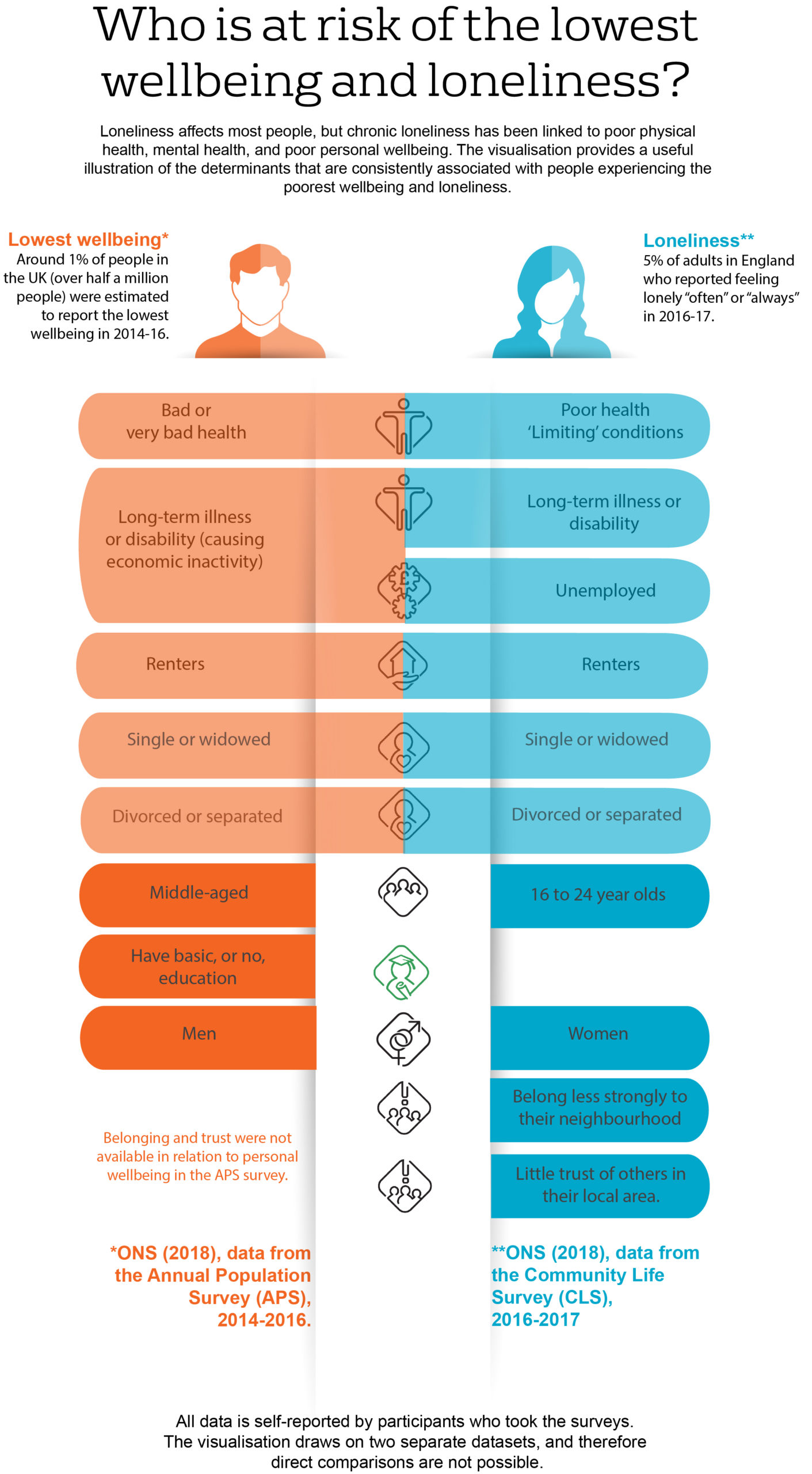Loneliness
Our relationships and positive social connections are essential for us to thrive.
- Having someone to rely on in times of trouble is the top driver of difference between high and low wellbeing countries.
- Our partner relationship is the second biggest driver of overall life satisfaction.
The quality of our relationships and friendships at home, at work and in our communities matter.
Loneliness and wellbeing
If we feel lonely most or all of the time, it can have a serious impact on our wellbeing, and our ability to function in society. As loneliness has been linked to poor physical health, mental health, and poor personal wellbeing – with potentially adverse effects on communities – it is an issue of increasing interest to national and local government, as well as internationally.
Loneliness and social isolation
Loneliness is different to social isolation, in that we can have any number of connections with family, friends, or other people, and still feel lonely. Loneliness can also be usefully distinguished from solitude – which has positive associations for the person experiencing it.
We have been building the evidence base on the different types of loneliness, and what works to reduce it across the lifecourse.
People
-
Ingrid Abreu Scherer
Most of us experience loneliness as some point in our lives, but the Office of National Statistics report that 5% of the UK population feel chronically lonely. Of this 5%, they are most likely to share the following characteristics with those who are at risk of low wellbeing:
What works to alleviate loneliness?
In 2018 we carried out a high-quality evidence review (a review of published systematic reviews) to find out what interventions worked to alleviate loneliness. It also looked at what key ingredients were common across these activities. Across the interventions that had an effect on reducing loneliness, we found these important mechanisms:
- no one-size-fits all approach to alleviating loneliness.
- tailoring interventions based on the needs of the people they are designed for,
- supporting people to form meaningful relationships
- developing approaches that reduce stigma.
There are three different types of loneliness experienced by different populations:
- Social loneliness refers to the perceived lack of quantity as well as quality of relationships.
- Emotional loneliness describes the absence or loss of meaningful relationships that meet a deeply felt need to be recognised and ‘belong’
- Existential loneliness refers to an experience of feeling entirely separate from other people, often when confronted with traumatic experiences or mortality.
What does this mean for policy and practice?
Measure your impact on loneliness
To support charities and social enterprises in understanding their impact on loneliness, our guidance helps you use the national loneliness measures in evaluations.



